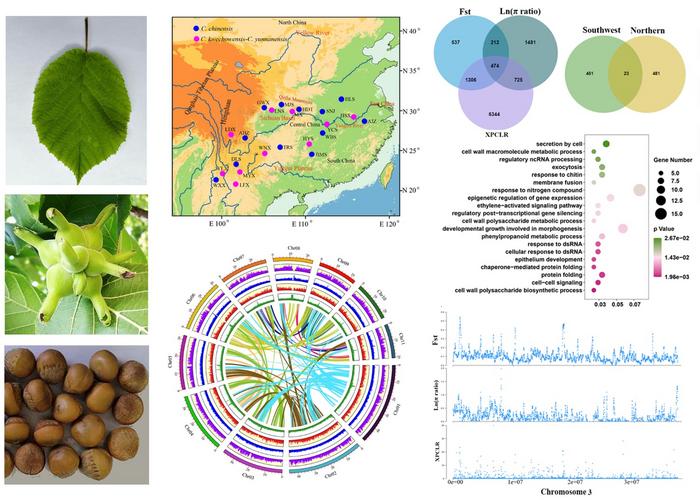Endangered species are often characterized by severe population decline or even near-extinction status during their demographic histories. Such threats usually stemmed from historical climate changes and human activities. For small, isolated populations, genetic drift can lead to inbreeding depression, erosion of genetic diversity and accumulation of deleterious mutations, which further decrease the adaptive potential and increase the extinction risk when facing volatile natural habitats or climate. Elucidating the demographic history of threatened species and the impact of genomic erosion on endangerment is fundamental to implement effective management and conservation.

Credit: Yang, Z., et al.
Endangered species are often characterized by severe population decline or even near-extinction status during their demographic histories. Such threats usually stemmed from historical climate changes and human activities. For small, isolated populations, genetic drift can lead to inbreeding depression, erosion of genetic diversity and accumulation of deleterious mutations, which further decrease the adaptive potential and increase the extinction risk when facing volatile natural habitats or climate. Elucidating the demographic history of threatened species and the impact of genomic erosion on endangerment is fundamental to implement effective management and conservation.
Corylus chinensis (CCH), the Chinese hazelnut, was widely distributed across Asia during the Tertiary period. However, it is now endangered and only disjunctively distributed in the mid-high mountains of subtropical China. Notably, its genetic characteristics, demographic history and adaptive potential remain largely unknown.
To that end, a team of researchers from China generated the first chromosome-level genome of the endangered C. chinensis, performed genomics and conservation genomics study, and compared the genomic signatures of population collapse, local adaptation, and genetic recovery with its sympatric widespread C. kwechowensis–C. yunnanensis complex (CKY).
“We found large genome rearrangements across all Corylus species and identified species-specific expanded gene families in C. chinensis that may be involved in adaptation,” shares co-corresponding author Zhaoshan Wang. “Population genomics revealed that both CCH and CKY had diverged into two genetic lineages, forming a consistent pattern of southwest-northern differentiation (SW vs N).”
Specifically, demographic inference suggested that population size of the narrow SW lineages (CCH_SW and CKY_SW) decreased continuously since the late Miocene, while the widespread N lineages remained stable (CCH_N) or even recovered (CKY_N) from population bottlenecks during the Quaternary.
Compared with CKY, CCH showed comparable genomic diversity and heterozygosity, but higher inbreeding levels measured by runs of homozygosity. However, CCH carried significantly fewer deleterious mutations than CKY, as more effective purging selection reduced the accumulation of homozygous variants. The team published their study in the KeAi journal Plant Diversity.
“We also detected significant signals of positive selection and adaptive introgression in different lineages, which facilitated the accumulation of favorable variants and formation of local adaptation. Hence, both types of selection and exogenous introgression could have mitigated inbreeding and facilitated survival and persistence of outcrossing CCH,” adds Wang.
Overall, the study provides critical insights into the lineage differentiation, local adaptation and potential for future recovery of endangered trees.
###
Contact the author: Zhen Yang, Research Institute of Forestry, Chinese Academy of Forestry, Beijing, 100091, China, yangzhen4058@caf.ac.cn
The publisher KeAi was established by Elsevier and China Science Publishing & Media Ltd to unfold quality research globally. In 2013, our focus shifted to open access publishing. We now proudly publish more than 100 world-class, open access, English language journals, spanning all scientific disciplines. Many of these are titles we publish in partnership with prestigious societies and academic institutions, such as the National Natural Science Foundation of China (NSFC).
Journal
Plant Diversity
Method of Research
Experimental study
Subject of Research
Not applicable
Article Title
Conservation genomics provides insights into genetic resilience and adaptation of the endangered Chinese hazelnut, Corylus chinensis
COI Statement
The authors declare that they have no known competing financial interests or personal relationships that could have appeared to influence the work reported in this paper.



